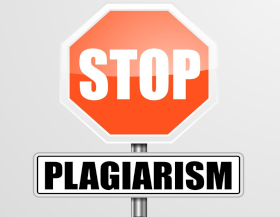How to Avoid Plagiarism in eBooks

Plagiarism is an act of presenting someone else’s work as your own. The work could include anything. It can be articles, blog posts, books/eBooks, research papers, and university students’ assignments. Plagiarism is a crime and unethical conduct. Different countries have different laws on it. In India and Poland, a person gets imprisoned for plagiarising.
Copyright infringement differs from plagiarism. Copyright violation is the act of using someone’s work without their permission. Since their work is copyright protected, in order to use it, you need permission. Every copyright infringement has plagiarism in it. But not every plagiarism material is a copyright violation.
Tips to Avoid Plagiarism in Book writing
Below are some tips to avoid plagiarism when writing your first eBook.
1. Write in your own Words
Instead of copying long paragraphs of someone’s saying, write it in your own words. Use indirect speech for this purpose. But the meaning of the text should not change. For example, Edward said, “I am resigning from this company.” You can write this as: ‘Edward told us he was resigning from that company.’ Also, don’t forget to add the reference to your text.
2. Use Plagiarism Checker Tools
Always make sure you pass the content through a good plagiarism detection tool. There are often few headings that get counted as plagiarized content. Even if you unintentionally do it.
When you check your plagiarism with the help of a plagiarism detection tool, it highlights the parts that need to be corrected. Fix those headings and sentences. However, some institutions allow up to five percent plagiarism. But this is not any rule or set standard.
Additionally, you can use these free websites to check plagiarism such as smallseotools.com and
prepostseo.com. Most of the free websites and software only allow one hundred words. You would need to buy their paid subscription to check over 1000 words.
3. Keep Track of your Resources
When you are doing the research bookmark or save all the resources and links somewhere. Make sure that you do it from the beginning of your research. It happens often that we don’t find the required resource after we finish writing. To avoid this, keep a good track of all the links and resources you need to cite and mention.
4. Mention the References as Hyperlinks
Some writers don’t know how to cite properly. They can add hyperlinks to the text. Or they can put the name of the resource at the end of the sentence and add a hyperlink to it.
For example (1) ‘This MacBook is new, but why is it making us nostalgic?’ This MacBook is new, but why is it making us nostalgic?
In the first example, I add the hyperlink to the word MacBook. It would help the reader go to the source where it is written. In the 2nd example, instead of adding hyperlinks to the word, I mentioned the writer and the website at the end of the sentence as hyperlinks.
Also Read: Books that became you rich
Also, there is another way to do it by adding the sentence I read in a blog/book in the starting and then mentioning the resource. This tip is for those writers who are not aware of APA and MLA formats.
5. Format Quotations As Quotes
There are two ways to present someone’s words in your text. Either paraphrase it or use the quote format for it. It is a format used on web pages for mentioning someone’s exact words. A quote comes between inverted commas.
Paraphrasing is not just changing words, using synonyms, and using indirect speech. Paraphrasing is also to explain what you have understood from the text. For e.g. Nikola Tesla said that we can find the secrets of the universe if we think in terms of energy, frequency, and vibration.
Quoting is mentioning the exact definition told by the author. A quote appears like this:
“If you want to find the secrets of the universe, think in terms of energy, frequency, and vibration.” -Nikola Tesla
Make sure you apply the quote format to all the quotations you used in your paper and cite them properly.
6. Reverse Plagiarism
It happens when a writer doesn’t find any resource of what he has claimed in his writing. He ends up making a false author and refers his text to him. Reverse plagiarism put a bad impact on the writing and readers don’t like to read that kind of content. To prevent reverse plagiarism, do research first and then write your content.
7. Solution for It
It is highly unethical to deceive and lie to your audience. You can mention clearly that you don’t have a resource for your claim. Be honest! It will build more trust between you and the audience.
Referring the Work to Fake Authors
This happens when a writer describes an idea in his own words and refers it to a person who hasn’t said that. It happened with a writer, Roy Peter Clark. They published writing where he was mentioned to say words he had not said.
Mixing up the information and making a Thesis
A writer researches on several websites and resources. He finds two remarkable sources of data and combines them in a paragraph and makes it his thesis. This is a severe type of plagiarism and it can damage your academic reputation.
Final Word
Avoid plagiarism as it is unethical. Write on the topics you actually like to avoid writing plagiarised content. Since you’ll naturally like to write about those topics. You have read the top five ways to write your eBook without plagiarism. Make sure you put in place all the tips.
And if you think you need assistance in writing your eBook, you can reach out to professional book writing services for that purpose too. These writers are exceptions in composing precise and succinct content for your books or any other form of content. They have a proven track record in composing 100% original content surpassing through various plagiarism-checking tools.
Make sure that you run your work using a plagiarism-checker to compose an original piece and present it publicly.






